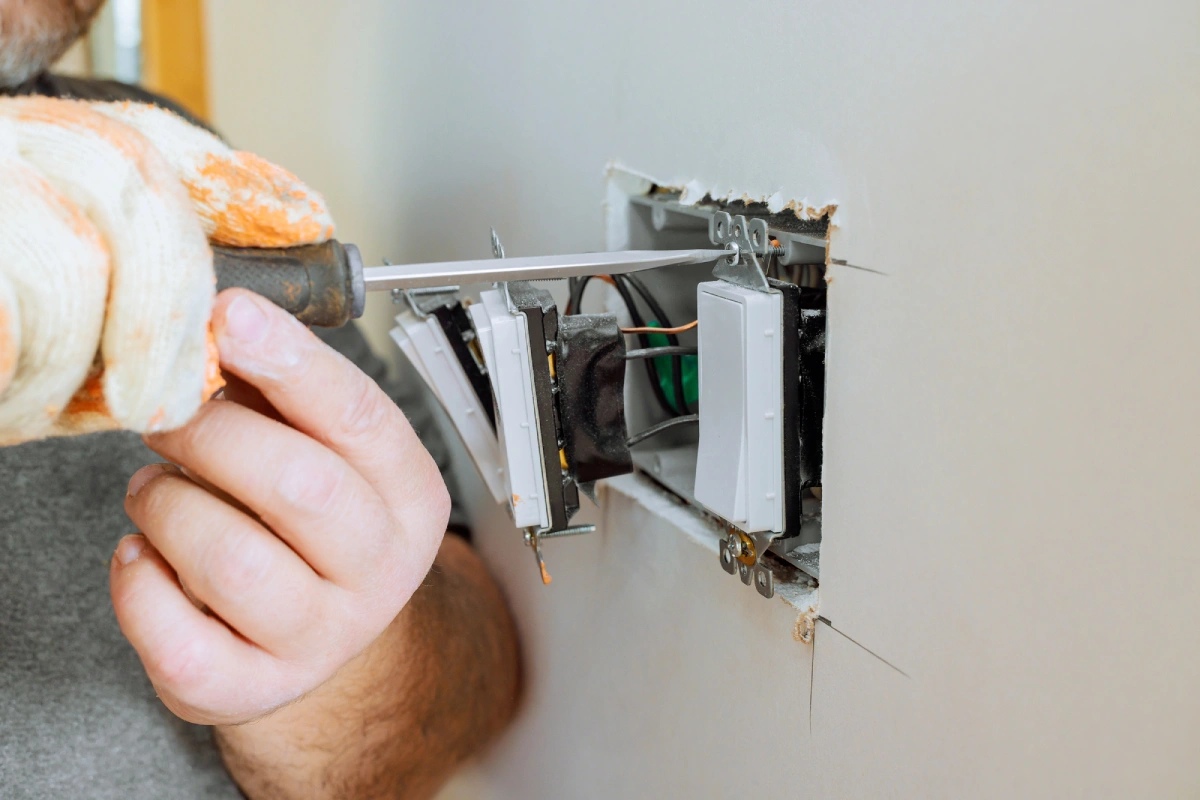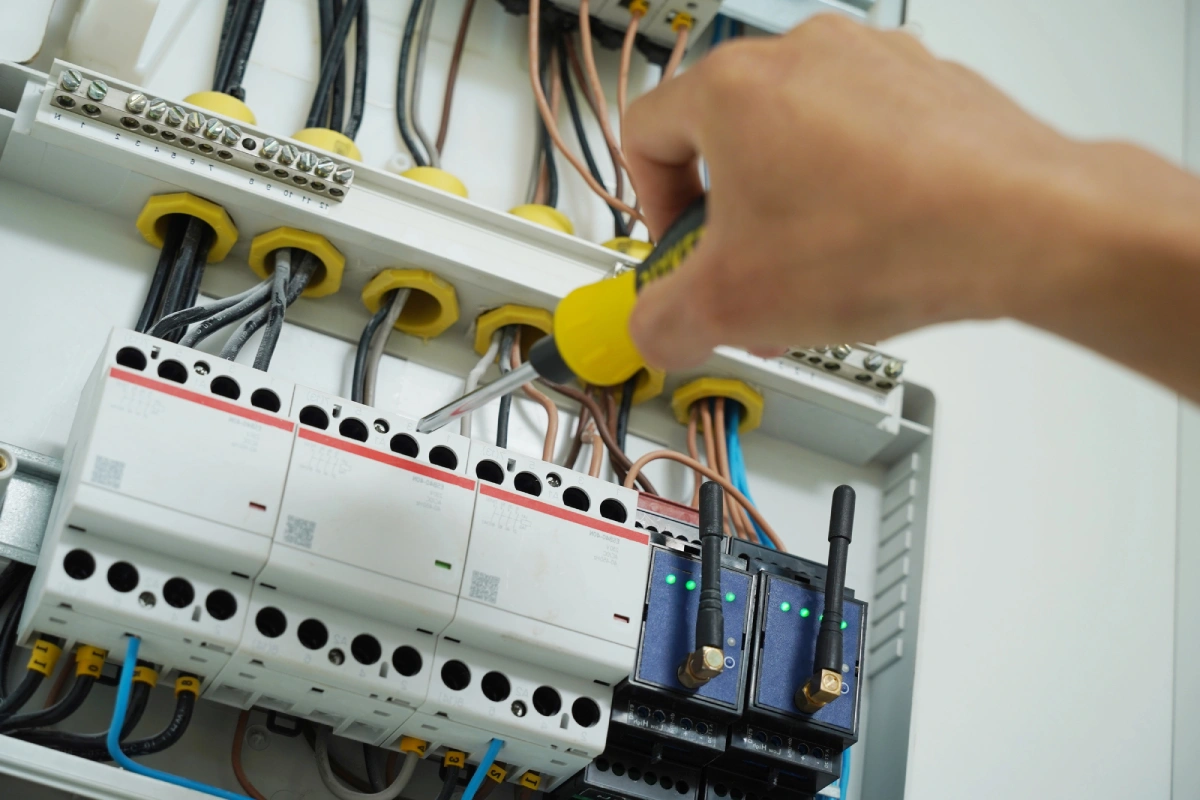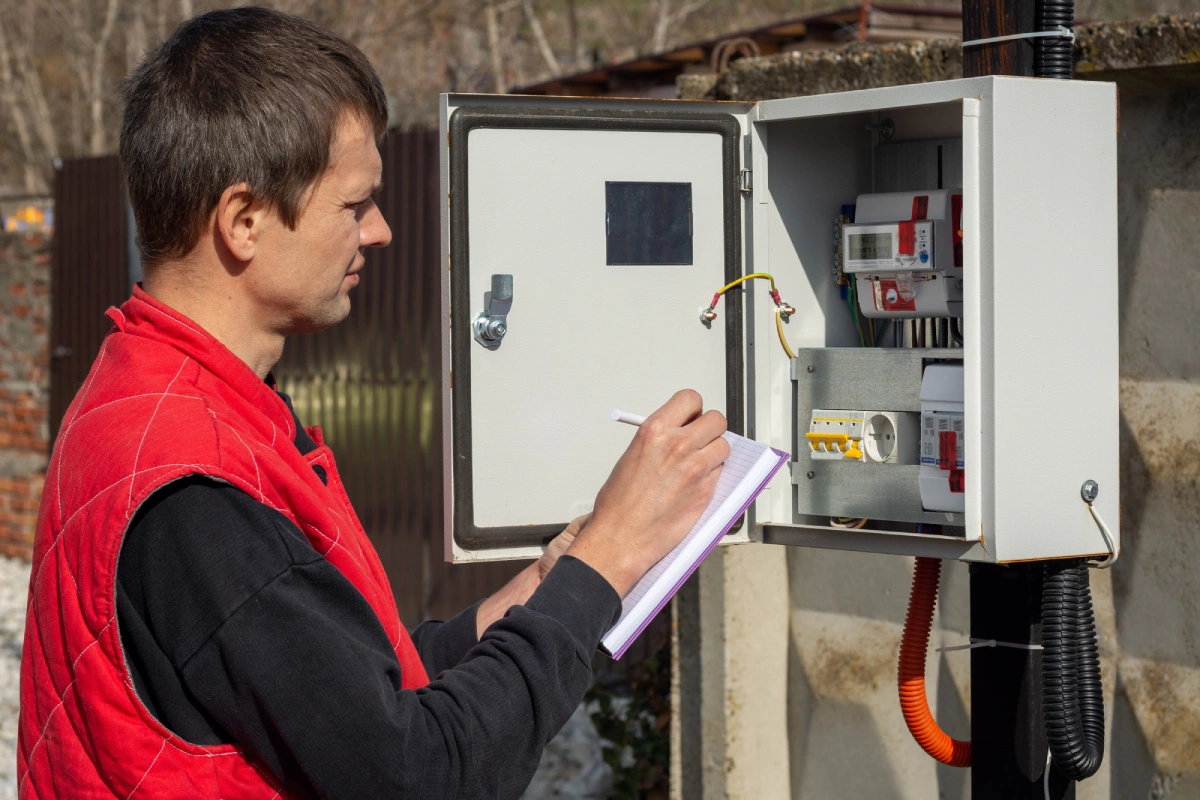1. Test Your Safety Switches (RCDs)
Your safety switch is arguably the most important safety device in your home. It’s designed to save your life by instantly cutting the power supply when it detects a leakage of current, which can happen in the event of an electric shock. Unlike a circuit breaker that protects your wiring from overload, a safety switch protects you.
How to check:
Locate your switchboard.
Find the switches labelled ‘Safety Switch’ or ‘RCD’ (Residual Current Device). They should also have a small button marked ‘T’ or ‘Test’.
Press the ‘T’ button. The switch should immediately flick to the ‘Off’ position.
To restore power, simply flick the switch back to the ‘On’ position.
What to do: We recommend you do this test every three months. If you press the test button and the switch does not trip to the ‘Off’ position, it means your safety switch is not working correctly. This is an urgent safety issue. You need to contact a licensed electrician immediately to have it inspected and replaced.
2. Check Cords and Plugs for Damage
Electrical cords and plugs can get worn out over time, especially if they’re in high-traffic areas or used frequently. Damaged cords are a major cause of electrical shocks and fires.
How to check:
Go through your home and visually inspect the cords on all your appliances—from the kettle in the kitchen to the lamp in the lounge room.
Look for signs of damage like frayed fabric, cracks in the insulation, exposed wires, or scorched marks.
Check the plugs for any loose pins or signs of melting.
What to do: If you find a damaged cord or plug, stop using it immediately. Do not try to repair it with tape; this is a temporary and dangerous fix. Replace the appliance or have a licensed electrician replace the cord. For valuable appliances, a professional repair is the safest option.
3. Avoid Overloading Power Points
In a modern home, it’s easy to plug multiple devices into one power point using a power board or double adapter. However, each power point and circuit is rated to handle only a certain amount of power. Overloading can cause the wiring to overheat, creating a serious fire risk.
How to check:
Count the number of appliances or devices plugged into each power point.
Look for power points with multiple extension cords or double adapters.
Feel for warmth around the power point, which could indicate a circuit being overworked.
What to do: Make sure you’re not plugging more than one power board into a single power point. Use a quality power board with surge protection and a circuit breaker, and only plug in the necessary devices. If you constantly find yourself needing more power points in one area, it’s a clear sign you need to engage a professional to install more outlets.
4. Keep Water and Electricity Separated
This might seem obvious, but it’s one of the most critical safety rules. Water is an excellent conductor of electricity, and the two together can be a fatal combination. This is why Queensland electrical laws have specific requirements for wet areas like bathrooms and kitchens.
How to check:
Ensure electrical appliances like hair dryers, electric shavers, and heaters are kept well away from the sink, shower, and bath.
Never use appliances with wet hands or while standing in water.
When working outside, make sure you’re using appliances and extension leads that are specifically designed for outdoor use and are in good condition.
What to do: If an appliance falls into water, do not touch it! Safely turn off the power at the main switchboard first, then unplug the device. If you’re a tenant and get a tingle or shock from a tap or other metal fitting, call your property manager and a professional electrician immediately.
5. Regularly Check Smoke Alarms
While not a direct part of your home’s wiring, smoke alarms are an integral part of your electrical safety. In Queensland, it’s a legal requirement to have interconnected photoelectric smoke alarms in all bedrooms, hallways, and on every level of the home. This law is being phased in and will be mandatory for all homes by 2027.
How to check:
Press the test button on your smoke alarm. It should sound a loud alarm.
If you have interconnected alarms, testing one should trigger all the others to sound.
If the alarm doesn’t sound or the battery is low, it needs to be attended to immediately.
What to do: You should test your smoke alarms monthly. If you have an older home and are unsure about your smoke alarm compliance, it’s best to get a professional to check it. An electrician can ensure your smoke alarms are correctly positioned, interconnected, and compliant with all the latest Queensland laws.
What These Checks Can’t Fix
These five checks are about vigilance, not maintenance. They are a great way to stay proactive, but remember, they can’t replace the expertise of a licensed electrician. You should never attempt to open up a switchboard, rewire a plug, or install a new outlet yourself. It’s illegal in Australia and incredibly dangerous.
If any of your DIY checks reveal an issue, or if you’re ever unsure about anything to do with your home’s electrical system, it’s time to call in the experts.
At Uncommon Electricians, we are dedicated to keeping the Ipswich community safe. Our team of professionals is trained to identify and resolve electrical hazards and provide you with solutions that are both safe and compliant.
If you have any concerns about your home’s electrical safety or need to book an inspection, please don’t hesitate to contact us. We’re here to help. You can reach us on 07 3074 9486 or visit us online at our website.



